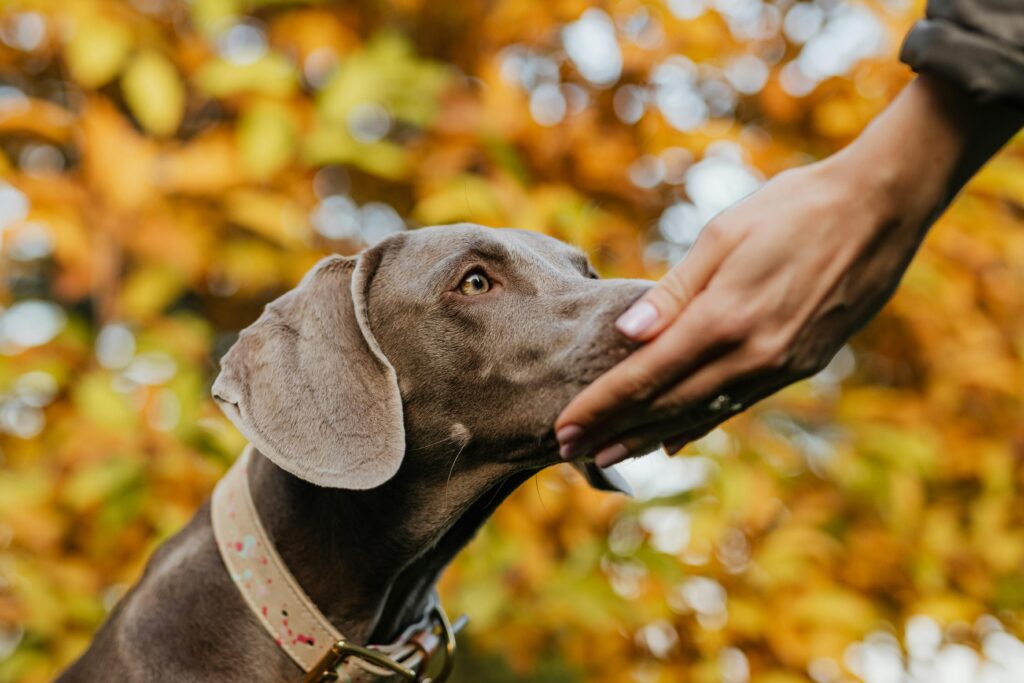Dogs are known for their incredible sense of smell, which is much more powerful than that of humans. While humans have about 5 million olfactory receptors, dogs have an estimated 220 million to 300 million. This ability to detect scents is an important part of a dog’s everyday life, as well as in specialized fields such as law enforcement and search and rescue.
The anatomy of a dog’s nose
The structure of a dog’s nose allows them to detect scents at a much greater distance and with much greater accuracy than humans. Dogs have a much larger and more complex olfactory system than humans. Their noses are equipped with specialized structures called turbinates, which help to increase the surface area available for scent detection. In addition, dogs have a specialized organ called the vomeronasal organ, or Jacobson’s organ, which allows them to detect pheromones and other chemical signals.
How dogs use their sense of smell in everyday life
Dogs use their sense of smell to gather information about their environment, other animals, and even humans. They can detect the presence of food, identify potential mates, and even determine if someone is afraid or anxious. This ability is particularly important for dogs that are used for hunting or tracking. For example, a search and rescue dog can use its sense of smell to locate missing persons by detecting their scent in the air or on the ground.
The science behind a dog’s sense of smell
The olfactory system of dogs is much more complex than that of humans, with many more receptors and a larger area of the brain dedicated to processing scent information. When a dog sniffs something, the molecules in the air bind to receptors in their nose, which then send signals to the brain for processing. This allows dogs to detect scents that are far too faint for humans to detect. In fact, dogs can detect some odors in parts per trillion, which is equivalent to detecting a single drop of water in 20 Olympic-sized swimming pools.
The limitations of human sense of smell
Humans have a much less powerful sense of smell than dogs, and are unable to detect many of the scents that dogs can. This can be a significant limitation in certain fields, such as law enforcement and medical research. For example, dogs are often used to detect drugs or explosives because they can detect the faintest traces of these substances, while humans would be completely unaware of their presence.
The differences between the olfactory systems of dogs and humans
The structure and function of the olfactory system in dogs is significantly different from that of humans. Dogs have a much larger area of the brain dedicated to processing scent information, which allows them to analyze smells in much greater detail. In addition, dogs have a specialized organ called the vomeronasal organ, which allows them to detect pheromones and other chemical signals that humans cannot perceive.
The training of dogs for scent detection
Dogs can be trained to detect a wide range of scents, from explosives to drugs to human remains. This training process is complex and requires a great deal of time and effort. It typically involves teaching the dog to associate a specific scent with a reward, such as food or playtime. Over time, the dog learns to recognize and indicate the presence of the target scent.
The use of dogs in law enforcement and search and rescue operations
Dogs are often used in law enforcement to detect drugs, explosives, and other contraband. Their ability to detect scents that are undetectable by humans makes them invaluable in these situations. They are also used in search and rescue operations to locate missing persons or survivors of natural disasters. Their sense of smell allows them to cover large areas quickly and efficiently, increasing the chances of finding someone in need.
The potential applications of canine scent detection in medical research
Dogs have been used to detect a wide range of medical conditions, including cancer and diabetes. Their ability to detect subtle changes in scent can be used to identify early signs of disease, potentially leading to earlier diagnosis and treatment. This has the potential to revolutionize medical research and improve patient outcomes.
The importance of understanding a dog’s sense of smell for dog owners and trainers
Understanding how dogs use their sense of smell is important for anyone working with dogs, from trainers to veterinarians to dog owners. This knowledge can help improve the health and well-being of dogs, as well as their effectiveness in specialized fields such as scent detection. For example, knowing that dogs rely heavily on their sense of smell can help dog owners provide mental stimulation by engaging their dog’s nose in activities such as scent games or nose work. It can also help trainers design effective training programs that take advantage of a dog’s natural abilities. Overall, understanding a dog’s sense of smell is crucial for anyone who wants to better understand and care for these amazing animals.
If you’re interested in learning more about dogs and their incredible sense of smell, you might also enjoy reading our article on “A Guide to the Dachshund Dog Breed.” Dachshunds are known for their keen sense of smell, which makes them excellent hunting dogs. Discover more about this unique breed and how their sense of smell compares to humans. (source)



